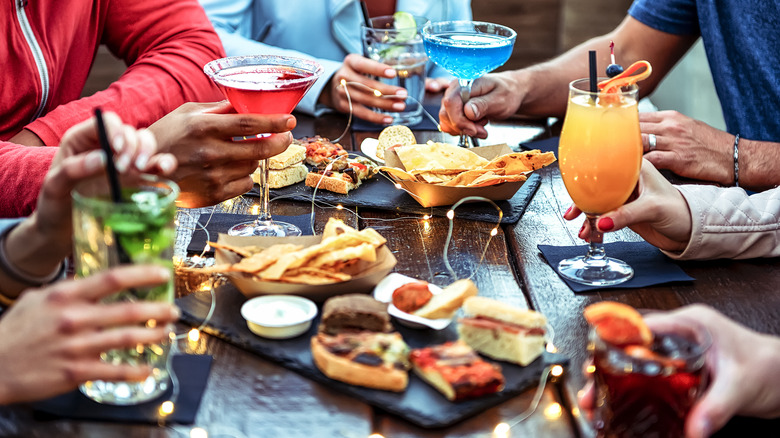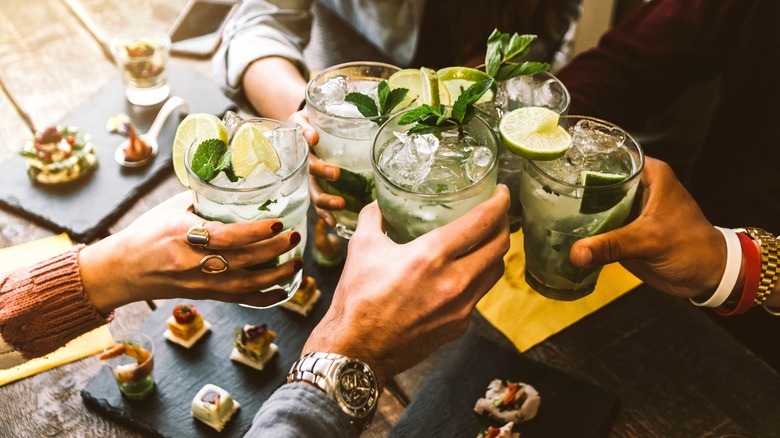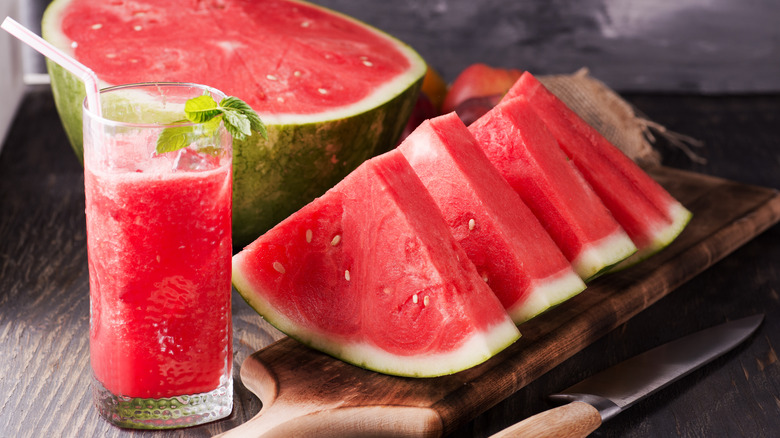You Should Still Be Pairing Your Non-Alcoholic Cocktails With Food
Most people understand that food and wine pairings exist for a reason. Specifically, their flavors are complementary. Oysters and Chablis, or caviar and Champagne are pairings that each enhance and elevate their pairing partner. Well, the same idea holds true for food and cocktails. Yes, even those that are non-alcoholic (NA) — aka mocktails. So it's definitely worth one's time to understand the underlying principles of these pairings, as this will pay dividends any time you serve these items in concert to your guests.
How do you do this? Start with the flavors in the food and drinks, and how they match up. "Regardless of whether the beverage you're pairing with has alcohol, you need to think about how the flavors are going to work with one another," notes Sharelle Klaus, CEO and founder of DRY Soda Co. "We've become so accustomed to classic alcohol and food pairings (red wine with steak, for example, or a margarita with tacos) that we're not really considering why a beverage tastes good with a certain food." So to get a good pairing with your non-alcoholic beverages, think about the flavor profiles present in your meal.
What food and wine pairings can teach us about non-alcoholic cocktails
"It's not necessarily harder to pair NA drinks with food," Klaus affirms. "It just requires a bit more thought. A full-bodied red tastes good with steak because its robustness stands up to the richness of the meat, so look for a full-bodied NA alternative with natural tannins, like cranberry, oak, or tea."
As the reference to tannins suggests, many of the same principles used for food and wine pairings are also in play with NA beverages. For starters, you'll want to identify the dominant flavor of your food dish and match it to the accompanying beverage. As there are only five tastes — salty, sweet, sour, bitter, and umami — this shouldn't be overly difficult. It's also important to maintain congruence with acidic foods and drinks. Salads and goat cheese are examples of acidic foods. Thus, the proper wine pairing for a salad with goat cheese might be a zesty Sauvignon Blanc. The New Zealand variety, known for its herbaceousness, would be perfect. The mocktail equivalent, meanwhile, could be something like a refreshing dry lemon-lime beverage, as both fruits boast a bracing acidity. Think a glass of seltzer with a squeeze of lime or curl of lemon peel, perhaps with a garnish of mint.
Matching the weight of foods and NA cocktails
"Don't be afraid to experiment!" Klaus advises. "Most people already know more than they think they do. We instinctively reach for something crisp and refreshing with spicy or fried foods, for instance. The basic rule is to match the 'weight' of the dish with the weight of the beverage. Pair heavier foods with more assertively flavored drinks and delicate foods with lighter beverages. Pairing specific flavor profiles within those parameters might take a little trial and error, but as long as you're paying attention to when and why pairings work — or don't — it'll become easier."
Matching the weight is also axiomatic when pairing foods and wines, and yes, it's applicable to food and NA drinks, too. What does weight mean in this context? It's actually a question of lightness versus heaviness, or spiciness, as Klaus suggests, and naturally, you want to match like with like. Lighter foods with delicate flavor profiles should be paired with lighter wines. The same with spicy foods and spicy wines. The cocktail equivalents are typically quite commonsensical. The bloody Mary and margarita, for example, are classic spicy cocktails. NA versions are available, as are close equivalents. The lighter or milder equivalent of an appetizer or salad, meanwhile, might be something like a white sangria mocktail. What about a more robust entree, like a steak or prime rib? The cocktail pairing would also be robust, of course. A Manhattan or old fashioned, or NA equivalent.



